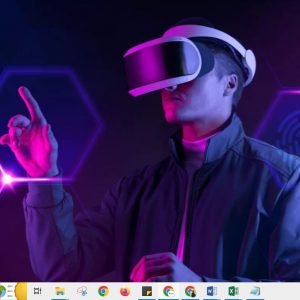Are you a fan of 3D projection mapping? Are you interested in learning how to do it? Keep reading this blog post to find out how projection is used to transform normal objects into breath-taking visual art.
What is 3D projection mapping?
Projection mapping is a great way to alter mundane spaces into phenomenal moving image displays. It involves the process of blending images from multiple projectors to display 2D images onto a flat object. These images can be projected onto any surface, from walls to the floors of a venue. 3D projection mapping, on the other hand, converts any surface into a video screen.
Practical Considerations
Aside from your creative and brand goals, the two biggest factors you need to consider are time and budget. Planning and creating the projection requires time, skill and advanced technology. The amount of time and money your project will cost depends on the scale and complexity of your projection surface, and its content. However, do not expect to produce an impressive 3D projection mapping project that costs very little or can be done quickly.
What Happens During the Process of 3D Projection Mapping?
Step 1 : Laser scan the building
The main difference between 2D and 3D projection mapping is that 3D projection mapping helps with accommodating the shape and contours of your projection surface. If the latest 3D CAD’s are not available, laser scanning the projection surface will give you a template that can start the 3D process.
Normally, laser scanning is done a month before the actual event takes place. It can take from 4 hours to 2 days to complete, depending on how big and complex the project is. For 3D mapping of a building, in order for the scanning to be successful, there needs to be unobstructed views of the structure. For that reason, the process is often done early in the morning when there is less activity occurring.
When this step is complete, the AV company will procure a 3D CAD drawing of the projection surface.
Step 2 : Apply the audience perspective
When creating content that will be projected onto a 3D surface, it is important to consider the audience’s position. In other words, the content should be optimised according to their perspective to ensure they are given the best experience. For example, if the audience is going to be looking up at the images projected, the video should be filmed from a lower angle.
Your projection mapping specialist will be in charge of converting the digital architectural drawing of the projection surface into a design format. Next, they should identify the position that will be used as the audience perspective reference. This will later be handed over to the content creators.
Step 3 : Create the content
The content that needs to be made can include graphic animations, video footage or a combination of the two. Regardless of the type of content being made, it should be created with the goal of making the best experience, based on the audience’s perspective. In the end, the final content is rendered into movie files, before being returned to the projection mapping specialist.
Step 4 : Preview
At this point, everything is imported onto media servers. The flat movie files are applied directly onto the texture map of the projection surface. This is done to see how the content reads when it is being played out on the building’s topography. Afterwards, virtual projectors are added to map out their ideal position, rotation, size, lens ratio, projection distance and lens size.
Step 5 : Adjust for real life
The projection mapping specialist is now responsible for putting the digitally-recommended projector positioning with real life limitations. All the projectors used in a projection mapping project should be aligned with each other, and positioned equal spaces apart. However, the venue will rarely allow for this to happen. Adjustments will need to be made, and this can be done by using a combination of two things: the projectors warping facilities and the media server’s mapping controls. Detailed projection locations are plotted out in the media server with a 10-15% overlap for blended projection. The end results show a seamless edge between the images that are displayed from different projectors.
3D projection mapping definitely requires a lot of time, skill, effort, and creativity – especially if it is to be done perfectly. Even so, you should not allow that to leave you feeling disheartened. Instead, use this information as a guide to make sure you have the best 3D projection mapping project out there!
Author’s BioAfsara Tasnim is a content writer for BreezeMaxWeb, who helps businesses grow their online presence through creating engaging copy. During her spare time, she enjoys taking photographs of nature and exploring the outdoors.





